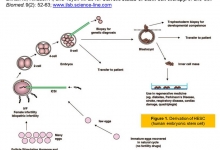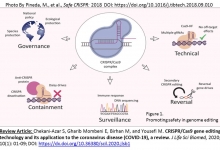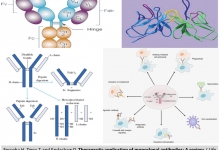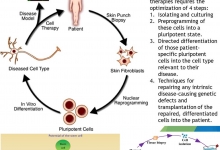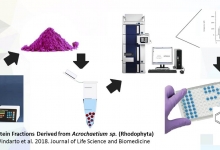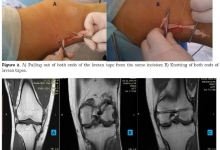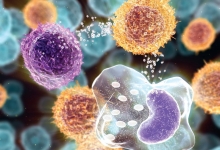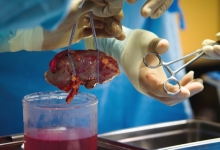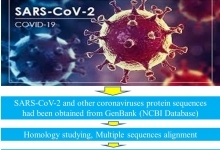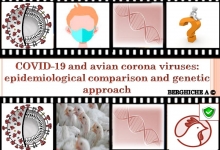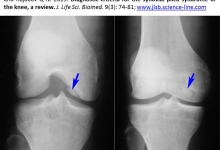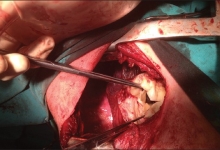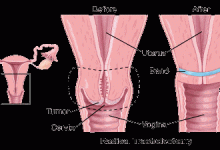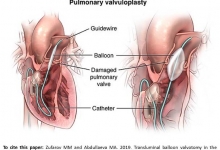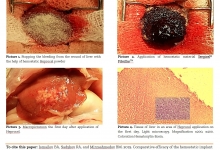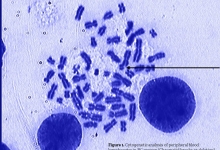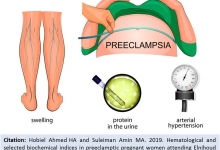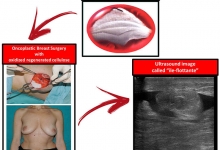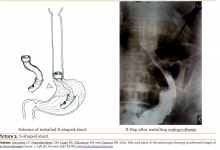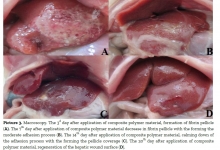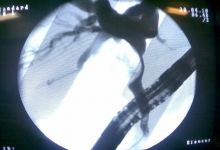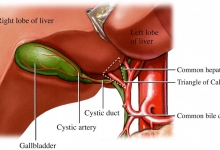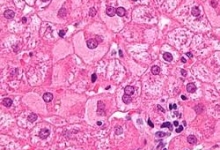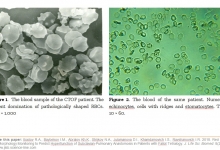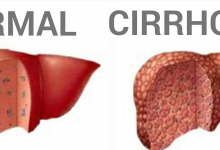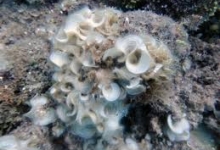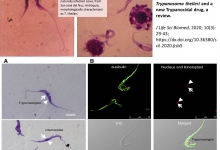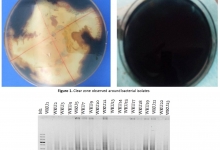Previous issue | Next issue | Archive
![]() Volume 11 (6); November 25, 2021 [Booklet]
Volume 11 (6); November 25, 2021 [Booklet]
| Biological, chemical and physical hazards control plans to ensure employees health during dried mango production |
Research Paper
Biological, chemical and physical hazards control plans to ensure employees health during dried mango production
Yaguibou AG, Tarnagda B, Zio S, Nikiema F, Tapsoba F, Karama JPB, and Savadogo A.
J. Life Sci. Biomed., 11(6): 94-106, 2021; pii:S225199392100012-11
DOI: https://dx.doi.org/10.51145/jlsb.2021.12
Abstract
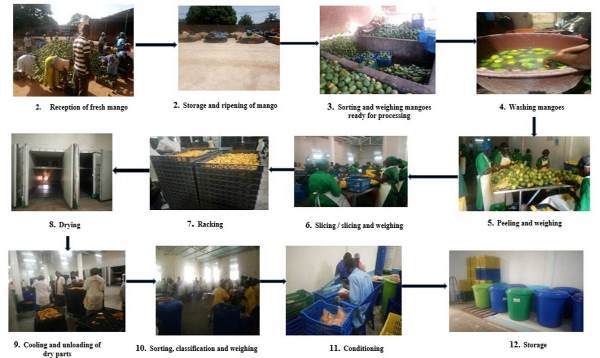 Food safety is an important quality approach that ensures the safety of both food products and the health of consumers and employees. Aim. This study aimed to develop a control plan through the analysis of critical points of the manufacturing process in the dried mango production units in Burkina Faso. Methods. Investigations were carried out within the manufacturing units located in two regions of Hauts Basins and Cascades with four cities: Bobo-Dioulasso, Banfora, Orodara and Toussiana. The use of 5M method made it possible to classify the various factors likely to contribute to the depreciation of mango quality. Results. The results showed that the majority of the manufacturing units are artisanal type and do not comply in terms of installation and sanitation. The equipments are rudimentary. The staff have not been trained in good manufacturing and hygiene practices. This derives from the practical solutions for the control, prevention and monitoring of 15 critical control points (CCP) identified during the production of dried mangoes. The CCP control plan including four control points has been established. Indeed, the implementation of the method requires the strict procedure monitoring. Conclusion. This study provided information on the risks associated with the production of dried mangoes in Burkina Faso. It will allow to produce quality dried mangoes and to preserve the health of employees and consumer’s by reducing Biological, chemical and physical hazards.
Food safety is an important quality approach that ensures the safety of both food products and the health of consumers and employees. Aim. This study aimed to develop a control plan through the analysis of critical points of the manufacturing process in the dried mango production units in Burkina Faso. Methods. Investigations were carried out within the manufacturing units located in two regions of Hauts Basins and Cascades with four cities: Bobo-Dioulasso, Banfora, Orodara and Toussiana. The use of 5M method made it possible to classify the various factors likely to contribute to the depreciation of mango quality. Results. The results showed that the majority of the manufacturing units are artisanal type and do not comply in terms of installation and sanitation. The equipments are rudimentary. The staff have not been trained in good manufacturing and hygiene practices. This derives from the practical solutions for the control, prevention and monitoring of 15 critical control points (CCP) identified during the production of dried mangoes. The CCP control plan including four control points has been established. Indeed, the implementation of the method requires the strict procedure monitoring. Conclusion. This study provided information on the risks associated with the production of dried mangoes in Burkina Faso. It will allow to produce quality dried mangoes and to preserve the health of employees and consumer’s by reducing Biological, chemical and physical hazards.[Full text-PDF] [XML] [ePub] [Export citation to BibTeX, RIS & EndNote] [How to Cite] [Semantic Scholar]
| Impact of premenstrual syndrome on multiple sclerosis symptoms in adult female: a retrospective cross-sectional study |
Research Paper
Impact of premenstrual syndrome on multiple sclerosis symptoms in adult female: a retrospective cross-sectional study
Ibrahim YE, Elkosery SM, Abo Elainin MF, and Botla AMM.
J. Life Sci. Biomed., 11(6): 107-112, 2021; pii:S225199392100013-11
DOI: https://dx.doi.org/10.51145/jlsb.2021.13
Abstract
 Premenstrual syndrome (PMS) is a group of symptoms that many women get about a week or two before their period. Multiple sclerosis (MS) is an autoimmune-mediated disorder that affects the central nervous system (CNS). Aim. This study aimed to see the impact of premenstrual syndrome on multiple sclerosis symptoms. Methods. Forty women having MS and complained from PMS, aged 20-35 years, with BMI less than 30 kg/m2 were selected randomly from Health Insurance Authority in El-Dokki they were assessed during two periods (normal and premenstrual days). The MS symptoms was assessed through functional system scale; fatigue severity scale and numerical scale and also premenstrual symptoms are assessed by PMS tracker. Results. Multiple pairwise comparison tests revealed that there was significant increase in functional system score in premenstrual period (p=0.006), and also in fatigue severity scale in pre-menstrual period (p=0.0001). Numerical rating scale showed that there was significant increase in pain intensity (p=0.0001) which became more prominent in pre-menstrual period. Conclusion. Premenstrual syndrome has an effect on worsening the symptoms of multiple sclerosis.
Premenstrual syndrome (PMS) is a group of symptoms that many women get about a week or two before their period. Multiple sclerosis (MS) is an autoimmune-mediated disorder that affects the central nervous system (CNS). Aim. This study aimed to see the impact of premenstrual syndrome on multiple sclerosis symptoms. Methods. Forty women having MS and complained from PMS, aged 20-35 years, with BMI less than 30 kg/m2 were selected randomly from Health Insurance Authority in El-Dokki they were assessed during two periods (normal and premenstrual days). The MS symptoms was assessed through functional system scale; fatigue severity scale and numerical scale and also premenstrual symptoms are assessed by PMS tracker. Results. Multiple pairwise comparison tests revealed that there was significant increase in functional system score in premenstrual period (p=0.006), and also in fatigue severity scale in pre-menstrual period (p=0.0001). Numerical rating scale showed that there was significant increase in pain intensity (p=0.0001) which became more prominent in pre-menstrual period. Conclusion. Premenstrual syndrome has an effect on worsening the symptoms of multiple sclerosis.Keywords: Premenstrual syndrome, Multiple sclerosis, Functional system scale, Fatigue severity scale.
[Full text-PDF] [XML] [ePub] [Export citation to BibTeX, RIS & EndNote] [How to Cite] [Semantic Scholar]
| Results of head and neck burn reconstructive plastic surgery |
Research Paper
Results of head and neck burn reconstructive plastic surgery
Kayumkhodjaev AA, and Khalmuratova MK.
J. Life Sci. Biomed., 11(6): 113-119, 2021; pii:S225199392100014-11
DOI: https://dx.doi.org/10.51145/jlsb.2021.14
Abstract
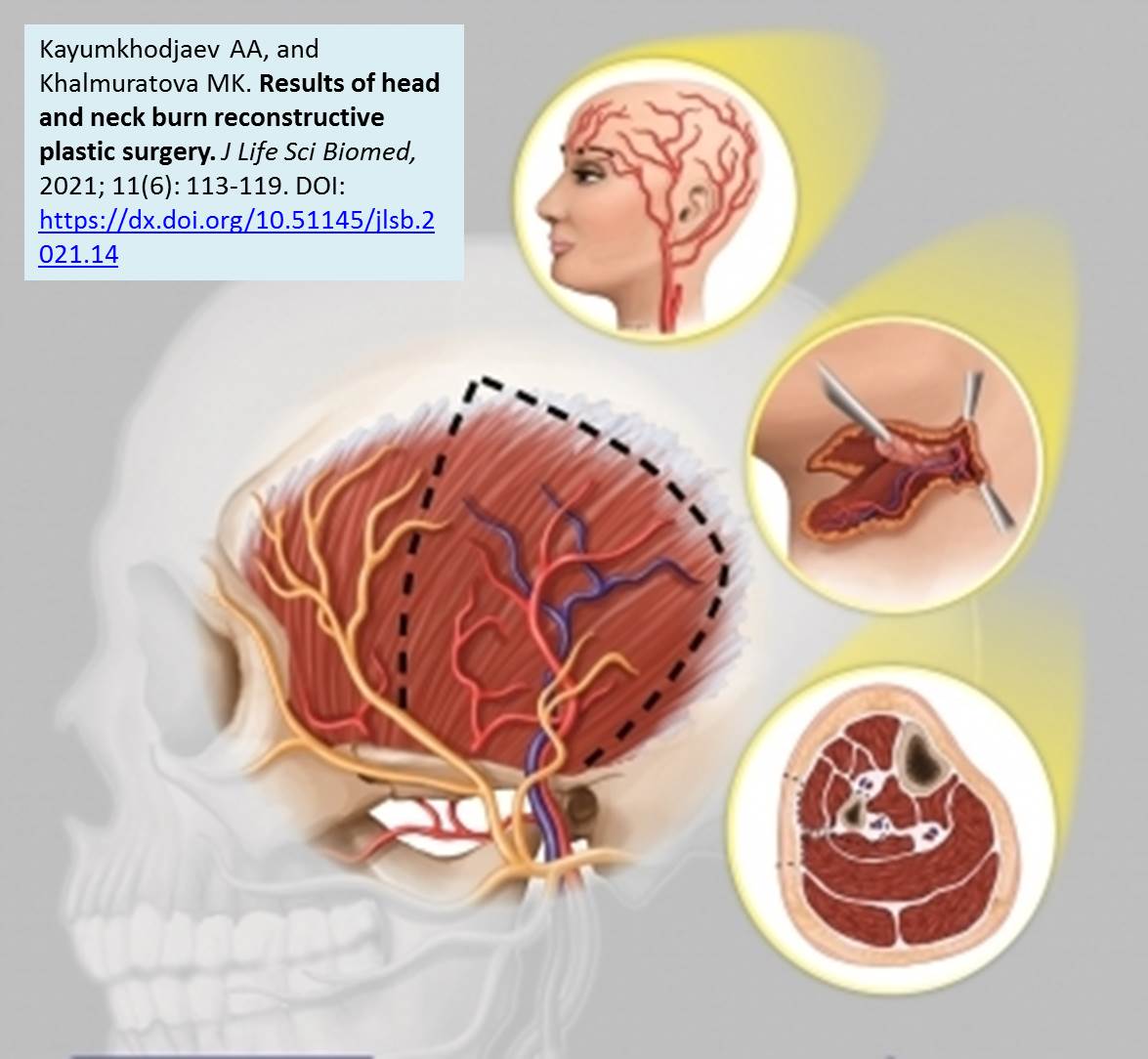 The present research aimed to analyze the results of all reconstruction types (microsurgical and axial flaps) in head and neck post-burn cicatricial defects. Methods. The study included 114 patients who underwent flaps autotransplantation with microvascular anastomoses, options for plasty with axial flaps on a preserved (natural) vascular pedicle, plasty with displaced flaps, and free skin plasty for the period from 1995 to 2021. According to the formed groups for comparative analysis, all patients were divided into a comparison group included of 51 patients (1995-2008 year) and the main group with 63 patients (2009-2021 year). Women predominated with 55.6% and 58.8% in the main and comparison groups, respectively. Medium defects (50-120 cm²) of the upper face and neck area prevailed in equal numbers (11.8%). Most of the patients had a median-lateral unilateral post-burn cicatricial deformity. In terms of functional impairments, grade I up to an angle of 90º and degree II up to an angle of 45º was prevailed. Results. The consolidated long-term results of plastic surgery in the functional value were good in the main group in 69.9% of cases, while in the comparison group it was in 47.1%. The aesthetic indicators of the consolidated long-term results of plastic surgery were good in 57.5% of cases of the main group and significantly was lower in the comparison group (33.3% of cases). Unsatisfactory results were observed in 1.4% of cases in the main group and 17.6% in the comparison group. Conclusion. Improvement in head and neck burn reconstructive plastic surgery with various variants of axial flaps made it possible to increase the proportion of uncomplicated postoperative course, shorten the hospital stay and the total duration of all stages of plasty, and, in general, ensured a decrease in the frequency of unsatisfactory functional and aesthetic results.
The present research aimed to analyze the results of all reconstruction types (microsurgical and axial flaps) in head and neck post-burn cicatricial defects. Methods. The study included 114 patients who underwent flaps autotransplantation with microvascular anastomoses, options for plasty with axial flaps on a preserved (natural) vascular pedicle, plasty with displaced flaps, and free skin plasty for the period from 1995 to 2021. According to the formed groups for comparative analysis, all patients were divided into a comparison group included of 51 patients (1995-2008 year) and the main group with 63 patients (2009-2021 year). Women predominated with 55.6% and 58.8% in the main and comparison groups, respectively. Medium defects (50-120 cm²) of the upper face and neck area prevailed in equal numbers (11.8%). Most of the patients had a median-lateral unilateral post-burn cicatricial deformity. In terms of functional impairments, grade I up to an angle of 90º and degree II up to an angle of 45º was prevailed. Results. The consolidated long-term results of plastic surgery in the functional value were good in the main group in 69.9% of cases, while in the comparison group it was in 47.1%. The aesthetic indicators of the consolidated long-term results of plastic surgery were good in 57.5% of cases of the main group and significantly was lower in the comparison group (33.3% of cases). Unsatisfactory results were observed in 1.4% of cases in the main group and 17.6% in the comparison group. Conclusion. Improvement in head and neck burn reconstructive plastic surgery with various variants of axial flaps made it possible to increase the proportion of uncomplicated postoperative course, shorten the hospital stay and the total duration of all stages of plasty, and, in general, ensured a decrease in the frequency of unsatisfactory functional and aesthetic results.
Keywords: Head and neck burns, Post-burn cicatricial defects, Reconstructive plastic surgery.
[Full text-PDF] [XML] [ePub] [Export citation to BibTeX, RIS & EndNote] [How to Cite] [Semantic Scholar]
| Esophageal tumors are complicated by dysphagia: results of patients’ stenting |
Research Paper
Esophageal tumors are complicated by dysphagia: results of patients’ stenting
Nizamkhodjaev ZM, Ligay R.E., Babajanov AS, Omonov RR, Tsoy AO, Nigmatullin EI, Fayzullaev OA, Abdukarimov AD.
J. Life Sci. Biomed., 11(6): 120-126, 2021; pii:S225199392100015-11
DOI: https://dx.doi.org/10.51145/jlsb.2021.15
Abstract
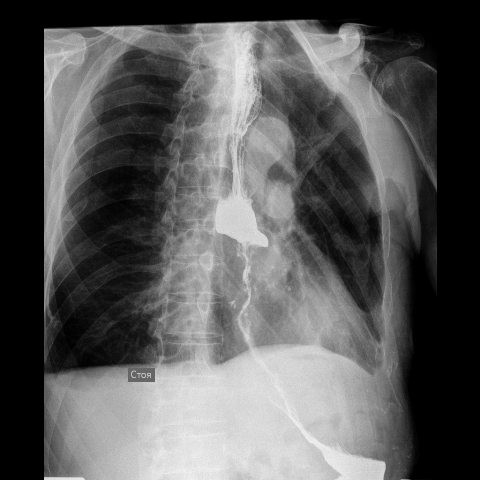 Despite advances in therapy, esophageal cancer (EC) is recently became one of most incurable cancers, especially when it leads to dysphagia. Hence there is a need for develop the optimum management options. Aim. This study presents the experience of treating 464 patients with inoperable stages of esophageal cancer. The causes of inoperable behavior in this type of patients have been identified. Methods. A total of 249 patients were subjected to the following various options of minimally invasive interventions: endoscopic diathermotunnelization (EDT) in 38 (15.3%), endoscopic bougienage (EB) in 18 (7.2%) and endoscopic stenting (ES) in 193 (77.5%) patients. Results. Improved methods of minimally invasive interventions, as well as the nature of possible complications during their use were presented. Conclusion. It is concluded that the installation of endoscopic stenting with self-expanding metal stents (SEMS) with an antireflux valve in the treatment of non-operable EC stages with dysphagia syndrome is the most safe, effective and fast treatment method for dysphagia relief with a greater efficiency and the less frequency of complications especially when conventional silicone and rigid stents is used.
Despite advances in therapy, esophageal cancer (EC) is recently became one of most incurable cancers, especially when it leads to dysphagia. Hence there is a need for develop the optimum management options. Aim. This study presents the experience of treating 464 patients with inoperable stages of esophageal cancer. The causes of inoperable behavior in this type of patients have been identified. Methods. A total of 249 patients were subjected to the following various options of minimally invasive interventions: endoscopic diathermotunnelization (EDT) in 38 (15.3%), endoscopic bougienage (EB) in 18 (7.2%) and endoscopic stenting (ES) in 193 (77.5%) patients. Results. Improved methods of minimally invasive interventions, as well as the nature of possible complications during their use were presented. Conclusion. It is concluded that the installation of endoscopic stenting with self-expanding metal stents (SEMS) with an antireflux valve in the treatment of non-operable EC stages with dysphagia syndrome is the most safe, effective and fast treatment method for dysphagia relief with a greater efficiency and the less frequency of complications especially when conventional silicone and rigid stents is used.Keywords: Esophageal cancer, Minimally invasive Treatment, Endoscopic tunneling, Esophageal stenting
[Full text-PDF] [XML] [ePub] [Export citation to BibTeX, RIS & EndNote] [How to Cite] [Semantic Scholar]


